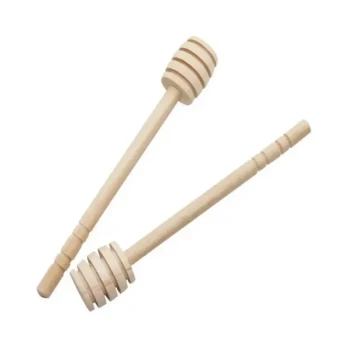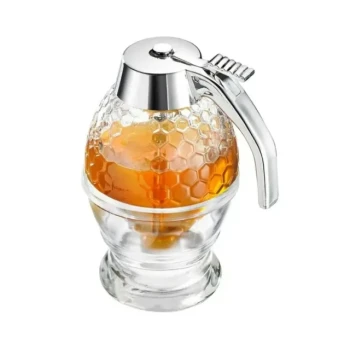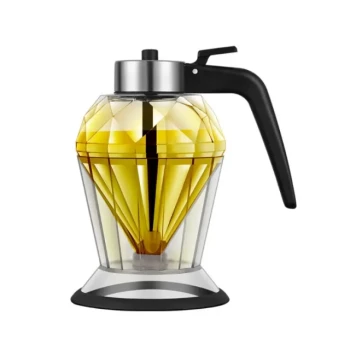The core design element of a honey dryer is a system of slowly rotating internal plates or discs. This mechanism is engineered to maximize the honey's surface area as it flows over the plates in a thin film. This large surface area dramatically accelerates the natural evaporation of excess water without requiring high, damaging temperatures.
The challenge with drying honey is not just removing water, but doing so without degrading its delicate enzymes and flavors. The honey dryer's design solves this by using slow-moving rotating plates to create a vast, thin film of honey, enabling rapid evaporation at a safe, low temperature.
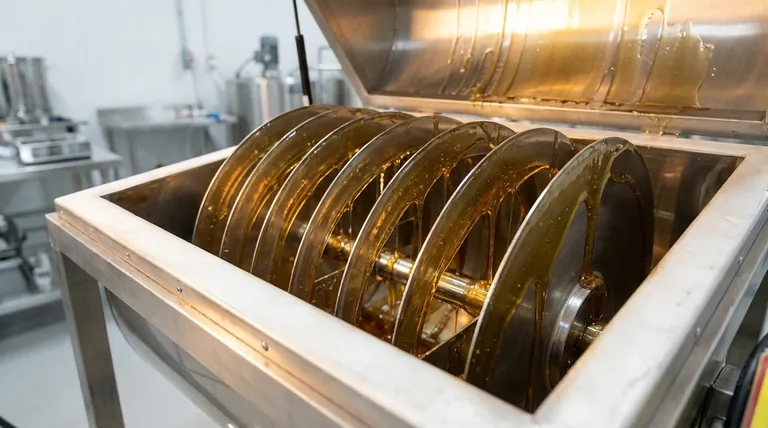
Why Honey Drying is a Critical Process
To understand the dryer's design, we must first understand the problem it solves. Not all honey is ready for storage straight from the hive.
The Problem of High Water Content
Honey is considered stable and safe from fermentation when its water content is below approximately 18%. Honey harvested early, during humid conditions, or from certain nectar sources can often have a water content exceeding 20%.
The Risk of Fermentation
This excess moisture allows naturally occurring osmophilic yeasts within the honey to activate and multiply. This leads to fermentation, which spoils the honey's flavor, aroma, and commercial value.
The Mechanical Solution: How Rotating Plates Work
The honey dryer's design directly targets the physics of evaporation to efficiently and gently remove excess water.
Maximizing Surface Area
The fundamental principle is that evaporation occurs at the surface. The stack of rotating plates forces the honey to spread out into an incredibly thin film. This drastically increases the total surface area exposed to the air circulating within the unit compared to honey sitting in a tank.
Facilitating Low-Temperature Evaporation
With such a large surface area, water molecules can escape much more easily. This means the process can happen efficiently at or near room temperature. It avoids the need for high heat, which would destroy the beneficial enzymes (like diastase and invertase) and delicate volatile compounds that give honey its unique character.
Gentle, Continuous Agitation
The slow rotation of the plates is a critical design feature. It gently and continuously brings new honey to the surface, ensuring the entire batch is dried evenly. This slow movement prevents frothing or the introduction of air bubbles, which could accelerate oxidation and damage the honey.
Understanding the Trade-offs
While effective, this design requires careful operation to achieve the best results. The goal is precision, not just speed.
The Risk of Over-Drying
Running the dryer for too long can reduce the water content too much. Over-dried honey becomes extremely viscous and difficult to handle or package, and it may be more prone to rapid crystallization.
The Importance of Speed Control
The plates are designed to move slowly for a reason. Attempting to speed up the process by increasing rotational speed would risk damaging the honey's structure and incorporating air. The trade-off is a slightly longer processing time in exchange for preserving quality.
Environmental Factors Still Matter
A honey dryer is not a magic box. Its efficiency is still influenced by the ambient temperature and humidity of the room. Drying will be faster in a warm, dry environment and slower in a cool, humid one.
Making the Right Choice for Your Goal
Using a honey dryer is about achieving a specific outcome. Calibrate your process based on your primary objective.
- If your primary focus is preserving artisanal quality: Run the machine at its recommended slow speed in a temperature-controlled room to protect the honey's delicate enzymes and aroma.
- If your primary focus is processing efficiency: The design is inherently efficient. Focus on regularly measuring the honey's water content with a refractometer to stop the process as soon as you reach your target, avoiding unnecessary machine time.
- If your primary focus is long-term stability: Your goal is to consistently bring the water content below the 18% fermentation threshold. This design gives you the control to hit that target precisely.
This technology empowers honey producers to guarantee a stable, high-quality product regardless of environmental harvesting conditions.
Summary Table:
| Design Feature | Primary Function | Benefit to Honey Quality |
|---|---|---|
| Rotating Plates | Creates a thin film of honey | Maximizes surface area for rapid evaporation |
| Slow Rotation Speed | Gently agitates the honey | Prevents frothing and protects delicate enzymes |
| Low-Temperature Operation | Facilitates water removal | Preserves flavor, aroma, and beneficial compounds |
Achieve Perfect Honey Stability with Professional-Grade Equipment from HONESTBEE
For commercial apiaries and equipment distributors, precision and product integrity are paramount. The gentle, efficient drying process described is only possible with reliable, well-designed machinery.
HONESTBEE supplies the durable, wholesale-focused honey processing equipment you need to:
- Guarantee Product Quality: Consistently achieve a stable water content below 18% to prevent fermentation and preserve the honey's unique characteristics.
- Maximize Operational Efficiency: Process honey efficiently without compromising on quality, ensuring a superior product for your market.
- Scale Your Operations: Our robust equipment is built for the demands of commercial beekeeping and distribution.
Ready to enhance your honey processing? Let our experts help you select the right equipment for your specific goals. Contact HONESTBEE today for wholesale inquiries and to learn more about our range of beekeeping supplies.
Visual Guide
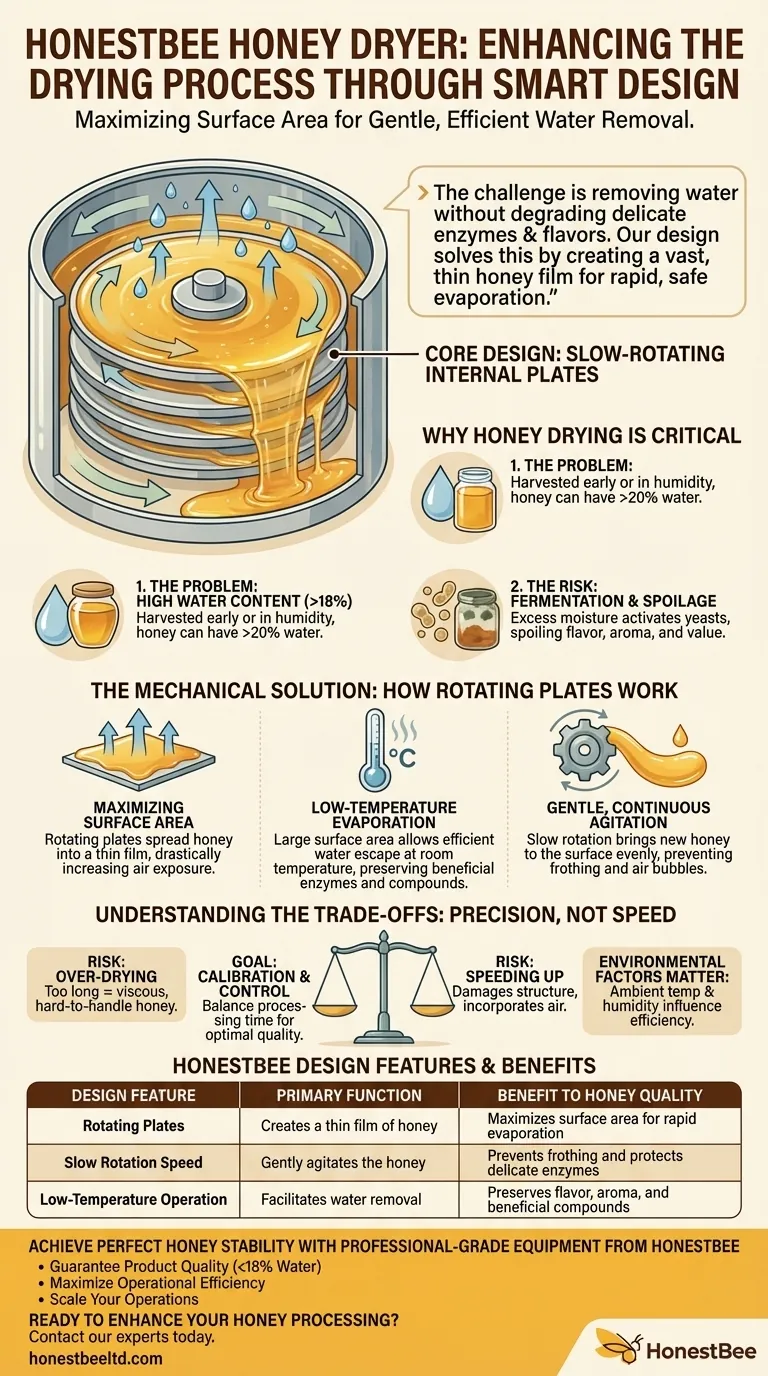
Related Products
- Economy Small Scale Honey Dryer Dehumidifier Thickening Machine
- HONESTBEE 72 Frame Industrial Electric Honey Extractor for Beekeeping
- 0.5T Capacity Honey Dehumidifier Dryer with Vacuum Heating and Thickening Filtering Machine
- HONESTBEE 6 Frame Three Use Electric Honey Extractor for Beekeeping
- 8-Frame Electric Self-Reversing Honey Extractor Spinner for Commercial Honey Extraction Equipment
People Also Ask
- How to reduce moisture level in honey? Preserve Quality and Prevent Fermentation
- How does a honey dryer remove moisture from honey? Achieve Perfect Honey Stability with Controlled Drying
- What are some methods to prevent fermentation in high-moisture honey? Protect Your Honey's Quality and Value
- Can you dehumidify honey? A Beekeeper's Guide to Preventing Fermentation
- How to remove humidity from honey? Protect Your Harvest from Fermentation













